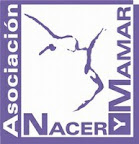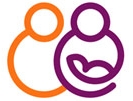El MOMENTO de la CESAREA electiva de repetición a termino y resultados neonatales.Timing of elective repeat cesarean delivery at term and neonatal outcomes.
ARTICULO ORIGINAL: CONCLUSIONES La cesarea electiva de repetición antes de las 39 semanas, está asociada problemas respiratorios y otros resultados adversos neonatales.
Articulo completo en la pagina de N Engl J Med.>>
Requiere subscripción o consultar desde la red corporativa del SAS
ABSTRACT
Background Because of increased rates of respiratory complications, elective cesarean delivery is discouraged before 39 weeks of gestation unless there is evidence of fetal lung maturity. We assessed associations between elective cesarean delivery at term (37 weeks of gestation or longer) but before 39 weeks of gestation and neonatal outcomes.
Methods We studied a cohort of consecutive patients undergoing repeat cesarean sections performed at 19 centers of the Eunice Kennedy Shriver National Institute of Child Health and Human Development Maternal–Fetal Medicine Units Network from 1999 through 2002. Women with viable singleton pregnancies delivered electively (i.e., before the onset of labor and without any recognized indications for delivery before 39 weeks of gestation) were included. The primary outcome was the composite of neonatal death and any of several adverse events, including respiratory complications, treated hypoglycemia, newborn sepsis, and admission to the neonatal intensive care unit (ICU).
Results Of 24,077 repeat cesarean deliveries at term, 13,258 were performed electively; of these, 35.8% were performed before 39 completed weeks of gestation (6.3% at 37 weeks and 29.5% at 38 weeks) and 49.1% at 39 weeks of gestation. One neonatal death occurred. As compared with births at 39 weeks, births at 37 weeks and at 38 weeks were associated with an increased risk of the primary outcome (adjusted odds ratio for births at 37 weeks, 2.1; 95% confidence interval [CI], 1.7 to 2.5; adjusted odds ratio for births at 38 weeks, 1.5; 95% CI, 1.3 to 1.7; P for trend <0.001). The rates of adverse respiratory outcomes, mechanical ventilation, newborn sepsis, hypoglycemia, admission to the neonatal ICU, and hospitalization for 5 days or more were increased by a factor of 1.8 to 4.2 for births at 37 weeks and 1.3 to 2.1 for births at 38 weeks.
Conclusions Elective repeat cesarean delivery before 39 weeks of gestation is common and is associated with respiratory and other adverse neonatal outcomes.







 Anterior: Procedimiento de matronas para ingresos y EGRESOS de gestantes de bajo riesgo.
Anterior: Procedimiento de matronas para ingresos y EGRESOS de gestantes de bajo riesgo.

 Web MatronasUbeda by
Web MatronasUbeda by 